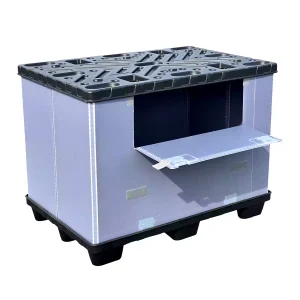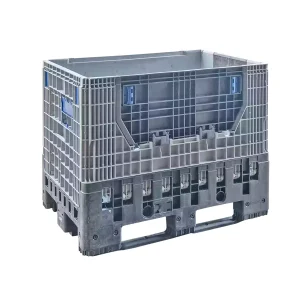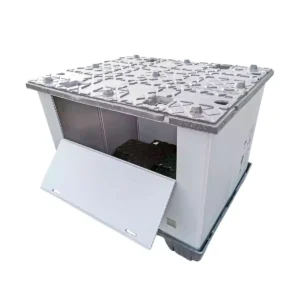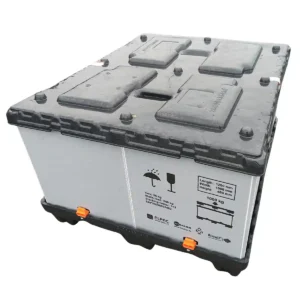Export Packaging
Export packaging is often a consumable item. As part of the finished product, they are used as final packaging to the customer. Because they do not return, you buy them again and again and they are a substantial part of your cost price.
There is a lot of choice in export packaging, for example, the one-time pallet boxes are available in Cardboard, Wood, and also in Plastic.
You can make an optimal choice depending on the weight that you need (dynamic load capacity), the vulnerability of your products and the country to which you export.
MATERIALS
To start with, you can choose the material: wooden boxes or plywood boxes, but also cardboard pallet boxes are possible.
All wooden pallets that come with carboard pallet boxes can be delivered with ISPM-15 treatment, which is necessary for transports outside of Europe.
In addition, used plastic pallet boxes (such as the PAG.e75) are also a frequently chosen option for export. Certainly if you need a high bearing capacity and you export to countries that have problems with wood.
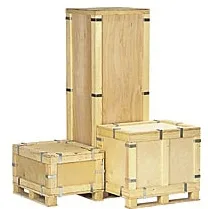
LOAD CAPACITY
Both in cardboard and in plywood palletboxen, loading capacities of 200 – 1,000kg of dynamic load capacity are available. They can then be stacked 1+1.
SPECIALS
If you use the cardboard pallet boxes for sea freight over a longer distance, there is a special version that can withstand high humidity for a long time. This is necessary to prevent “sagging” during transport.
For larger runs, special insides are also available, which are tailor-made for your products. So that they are motionless and shockproof in the pallet box. This is available both for the plywood boxes and for the cardboard pallet boxes.
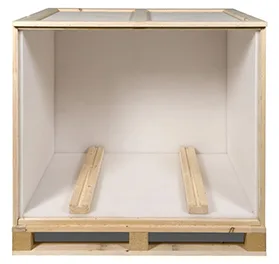
UN-CERTIFIED
If necessary, we also have UN-certified export packaging for your dangerous goods. In both wood and cardboard with a pallet size 800x1200m.
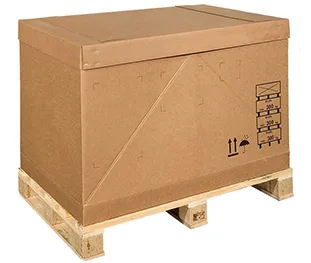
OPTIMAL CHOICE
Choosing the optimum export package means choosing the most economical option that is suitable for your specific product.
We are happy to advise you on this. Because we offer the entire range of export boxes from various suppliers, we are able to give you independent advice.
How To Contact Us?
Need help choosing the right export packaging? You are only a phone call away from professional advice and assistance from the ZAMKO team.
+31 40 711 47 17
Have More Question?
Have more questions about pallet boxes? We’re here to help! Call us now on the provided phone number or use our Call Me option.
or
+31 40 711 47 17
Leave you phone number here and we wil contact you soon:
or
Send Us an Email
Q&A About Export packaging
What is export packaging?
Export packaging refers to the specialized packaging used for products or goods that are intended for international shipment. It involves packaging materials and techniques that ensure the safe transportation of goods over long distances and through various modes of transportation.
What are the key considerations when designing export packaging?
When designing export packaging, several factors need to be considered, including the fragility of the product, its weight and dimensions, the mode of transportation, potential environmental conditions, regulatory requirements, and the length of the shipping journey. The packaging should be able to withstand handling, stacking, and potential impacts during transit.
What types of materials are commonly used in export packaging?
Common materials used in export packaging include corrugated boxes, wooden crates, pallets, foam inserts, protective films, stretch wraps, strapping materials, and cushioning materials like bubble wrap or air cushions. The choice of materials depends on the nature of the product and its specific packaging requirements.
Is it export packaging important and why?
Export packaging is crucial to protect goods during the complex and often rough journey of international shipping. It ensures that products arrive at their destination in optimal condition, minimizing the risk of damage, breakage, or spoilage. Proper packaging also reduces the likelihood of delays, customs issues, and potential liabilities.
How does export packaging differ from regular packaging?
Export packaging differs from regular packaging in that it needs to withstand longer transit times, various handling processes, and potential exposure to different climates and environmental conditions. It often requires additional layers of protection, sturdier materials, and stricter compliance with international shipping regulations.
Are there specific regulations or standards for export packaging?
Different countries may have specific regulations or standards for export packaging. These can include guidelines on packaging specifications, labeling requirements, safety precautions, and compliance with international standards such as International Standards for Phytosanitary Measures (ISPM) for wooden packaging materials. It is important to research and adhere to the regulations of the target country.
How can export packaging help with customs clearance?
Well-designed export packaging can facilitate customs clearance by providing clear labeling, appropriate documentation, and compliant packaging that meets the customs regulations of the importing country. This can help streamline the customs process, reduce the likelihood of inspections, and ensure a smoother transition through customs checkpoints.
Can export packaging be customized for specific industries or products?
Yes, export packaging can be customized to suit the specific requirements of different industries or products. Industries such as electronics, automotive, pharmaceuticals, or perishable goods may have unique packaging needs due to the nature of their products. Customized export packaging takes into account factors such as product dimensions, fragility, and specialized handling requirements to ensure safe and efficient transport. ZAMKO offers personal customization to wide verity of export packaging. Contact us for more specifics and information.
BE THE FIRST TO KNOW
Get all the latest information on Events, Sales and Offers. Sign up for newsletter today.
We will only use your email address to provide updates on our latest news, and won’t flood your inbox with mail.

